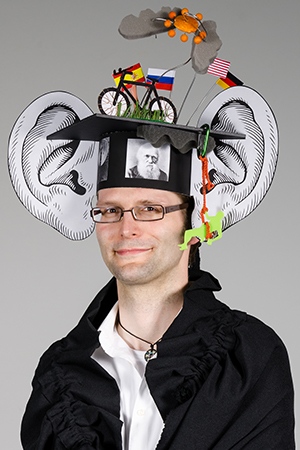Konrad Sickel
Computerized Automatic Modeling of Medical Prostheses
Abstract
In this thesis we study artificial intelligence methods, rule-based expert systems in particular, for the task of automatically designing customized medical prostheses. Here, the term design denotes the shaping or modeling of the prostheses and not their functional design. The challenge of the task at hand lies in designing prostheses that fit perfectly to the anatomy of the patient, and in many cases have to support additional functionality. Hence, each prosthesis has to be unique. Therefore, medical prostheses are usually designed starting with a template of the patient’s anatomy, e. g. acquired using CT data or scanned and digitized molds. In this thesis we assume that the template data is given as a triangle mesh in 3-D. To address the challenge of automatically designing medical prostheses, we develop an expert system framework consisting of an expert system shell, a knowledge base and a feature detection unit. The framework is integrated into an existing modeling software. In the following, we denote the complete system as Expert System for Automatic Modeling (ESAM). The architecture of ESAM is generic and can be used for all kinds of design tasks. The specialization for the application in mind can be achieved by providing the necessary design rules and by adjusting the feature detection algorithms. Our expert system specializes in monitoring and controlling a CAD software. Thus, it defines the parameters of the CAD tools, executes the tools and monitors the results by constantly analyzing the current shape. As part of the expert system we develop a knowledge representation language to structure and store the expert knowledge. The language is easy to understand, flexible and can be extended as required. The knowledge base is created in interaction with experts of the field. In addition, we study methods to extend, improve and maintain the knowledge base. We evaluate two methods for rule creation and rule critic. On the one hand, we apply genetic programming as a rule learning technique. On the other hand, we use a heuristic method based on data generated by ESAM. For the latter, we develop a tool that generates statistics about rule performance, rule relationships and user interaction. The thereby gained knowledge is integrated into the knowledge base, resulting in a higher performance of ESAM, e.g. the completion rate increased by about 30 %. We apply two types of feature detection methods for the detection of surface features on the given templates. The first method analyzes the surface of the given template for peaks, depressions, ridges and combinations of these generic features. The generality of the detected features allows a simple adjustment to different anatomies. The second method uses registration in order to copy features from a labeled template to an unlabeled one. As a first step, it applies clustering techniques to identify a suitable set of representative templates. In the second step, these templates are labeled by a domain expert. Subsequently, the labels can be transferred based on the result of an ICP registration. Our experiments show that the second approach results in a higher quality of the detected features, e. g. mean deviation is reduced from approximately 3.8 mm by about 30 % to approximately 2.6 mm. ESAM is verified using the example of customized in-the-ear hearing aid design. An industry partner provides the domain knowledge necessary to create the knowledge base as well as the possibility to verify the system in a real production environment. In order to ensure the quality of the designed and manufactured in-the-ear hearing aids, the system is verified while running in a semi-automatic mode. The semi-automatic mode allows a modeling expert to monitor and correct the system if necessary. During the verification and practical usage of ESAM thousands of customized in-the-ear hearing aid shells are manufactured. It could be shown that compared to the manual approach the design consistency improves by about 10% and the design time is reduced by about 30 %. The overall acceptance rate of an expert system rule is 76 %. In addition to that, ESAM provides a framework, which guides the modeler through the complex design process, and thereby reduces the amount of design errors and avoids unnecessary process steps. As a consequence of these positive evaluation results our industry partner continues to apply ESAM on its production floor.
